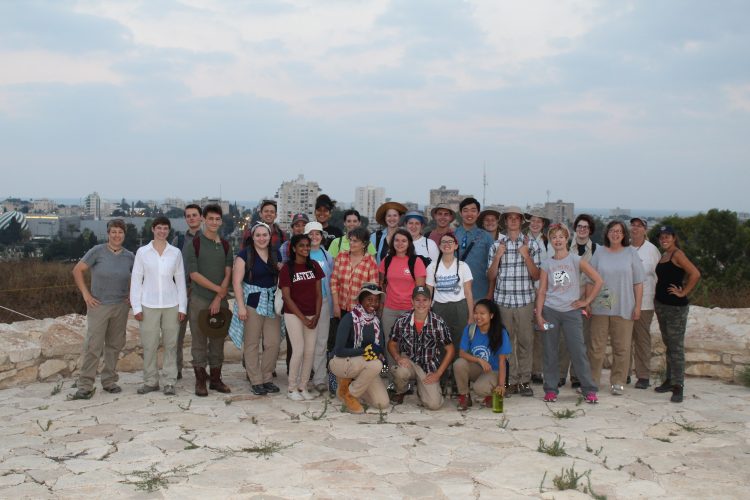When in Israel, Work with Teens
Community archaeology. Essentially, it’s a way of involving the local community in the history and current activities surrounding archaeological sites. While each community archaeology project has their own unique way of achieving this goal, the overall intent of these projects are to raise awareness and a sense of connection to the places that archaeologists are digging for the people who live nearby.
The community archaeology program at Tel Akko connects American university students and Israeli teens with one another to teach conservation and excavation techniques. The first day established relationships through building with stones and mortar, which ended with lots of laughter, a mortar birthday cake, and newfound friendships abound. The second day developed the camaraderie of the first day by putting our newly acquired skills to the test with a real conservation project on walls. These days of conservation were followed by a day where we looked at the city of Akko through the teens’ eyes. They lead us around on a photo scavenger hunt adventure to see personal important places – an adventure that spontaneously joined us with another citywide scavenger hunt! The rest of the program was spent working on the tel together, finding and learning about the things the ancients left behind.
Overall, the community archaeology program was an amazing experience filled with fun, learning, and friends. The teens I worked with will hold a special place in my heart, along with all the wonderful memories we made together. I’m beyond glad that I had the chance to work with and learn from such amazing teens. My life has been enriched because of it. I was proud to watch them get their completion certificates, as I felt, and still do, we had become part of a wide-ranging family in the few weeks we were in the program together.
At the teens’ program graduation, as I was chatting with my main partner, her mom came over to me, started to shake my hand, and profusely thanked me for everything while inviting me to come stay with them anytime. I couldn’t help but be touched by her kindness and generosity, and only wish there was a way I could return the gesture.
This is why community archaeology exists. It makes the archaeological site relevant to the local community, all the while making lasting connections for all the participants, local and foreign. It leaves an impression, that, sometimes, you aren’t aware of right away or you never even imagined possible.



